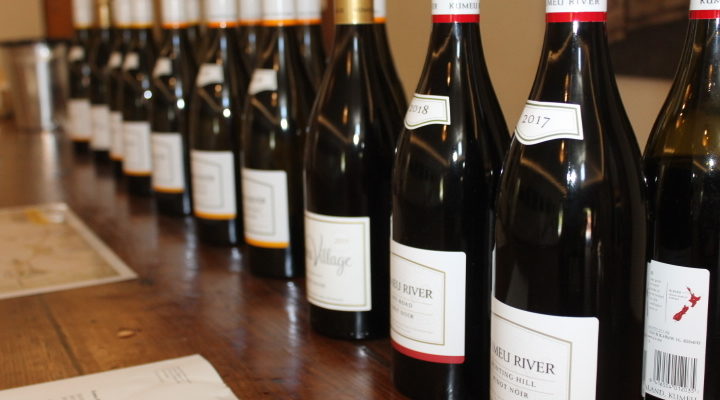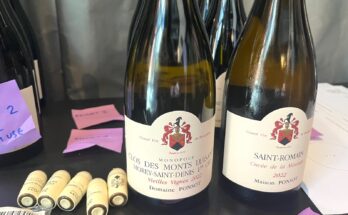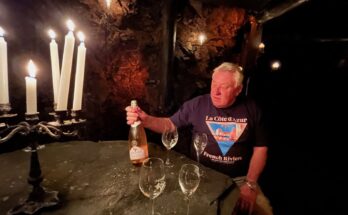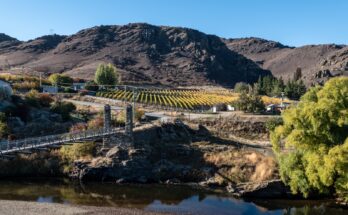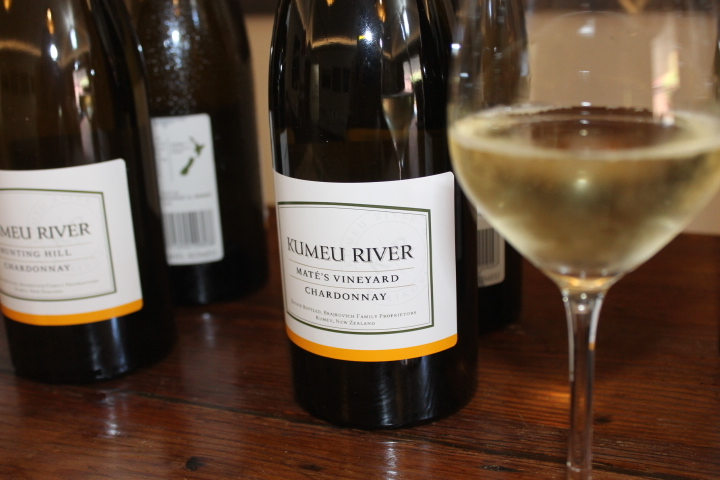
Kumeu River 75th Anniversary Tasting 23rd November 2019
Kumeu River celebrated their 75th Anniversary with a series of special Chardonnay Masterclass digging out some older vintages for a vertical tasting of Single vineyard and estate wines from the family cellar. Paul and Michael Brajkovich have become well-known for this type of library tasting in New York and London, so to have the opportunity to experience this on our own doorstop was a golden ticket for their Auckland admirers.
Starting with a glass of the new Kumeu Crémant as we arrived. Bottled and left on its lees for three years before disgorging in December 2017. Made of 60% Chardonnay and 40% Pinot Noir from the 2014 vintage. This is a superb drop of sparkling wine, and it’s perhaps a wonder that Kumeu River have taken a while to create this. A crisp acidity, and delightful brioche and creamy curds flavours. Sharply dry but with nuances of honey and apple pie in the finish. What follows is in Paul’s words “a snapshot of what we can do here, across various vineyards and vintages”.
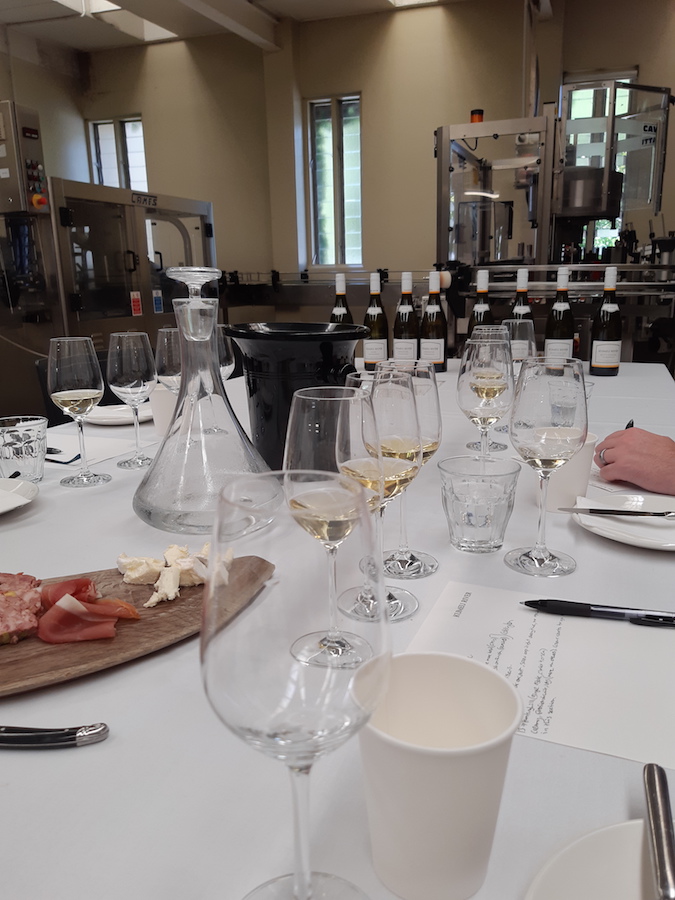
“The Estate Chardonnay has made our reputation internationally – we first started making what was then known as Kumeu River Chardonnay in 1985 and then, as it is now, it was always a selection of the better vineyard sites. Everything is hand harvested, whole bunch pressed and all wild yeast fermentation in barrels. In the case of the Estate Chardonnay we use approximately 20% new barrels each year. Through the mid to late 80s, the wine started to get a real reputation as a Burgundian look-alike. At blind tastings the most common response was that it was ‘a Premier Cru Burgundy from a decent producer’ which is not bad!”
“Finally in 2015 a serious tasting was organized and people including Neil Martin, Jancis Robinson, Jamie Goode and Oz Clarke were invited. Paul tells the story “In each flight there would be one Kumeu River wine and 4-5 similar level burgundys. After every flight, scores showed we were top, except for one flight where we were first equal. And the reaction we got from that was terrific”.
We tried the 2017 and 2016 Estate Chardonnays. Made from six different vineyards, kept separate and then blended later on; and both pretty good vintages. The 2017 is exquisitely fragrant, with vibrant acidity and lovely peachy flavours in a lithe texture on the palate. The 2016 introduces itself as a little riper – a richer, viscose texture and a little lower acidity.

“In 2000, which was a fantastic vintage, the Coddington Vineyard produced the ripest fruit we saw that year; and a very unctuous, special character. We thought let’s bottle a few bottles of this and see what it looks like. It was so distinctive in its richness and ripeness, so we thought in 2006 that we would give it a Single Vineyard status. It always produces the ripest luscious chardonnay we see each year. Of the three single vineyards we have it’s the easiest to taste when it is young.”
The 2015 and 2014 wines are stunners. ’15 was a cooler year in Auckland, and are lent a pronounced acidity. The wine was initially austere but with some bottle age here, it has fleshed out and has a creamy edge to the grapefruit, with a flamboyance balanced with a gentle swath of toasty oak. 2014 was a stellar vintage – Michael describes it as “generous” A very peachy wine, with a density and rounded palate of lemon curd and hazelnut.
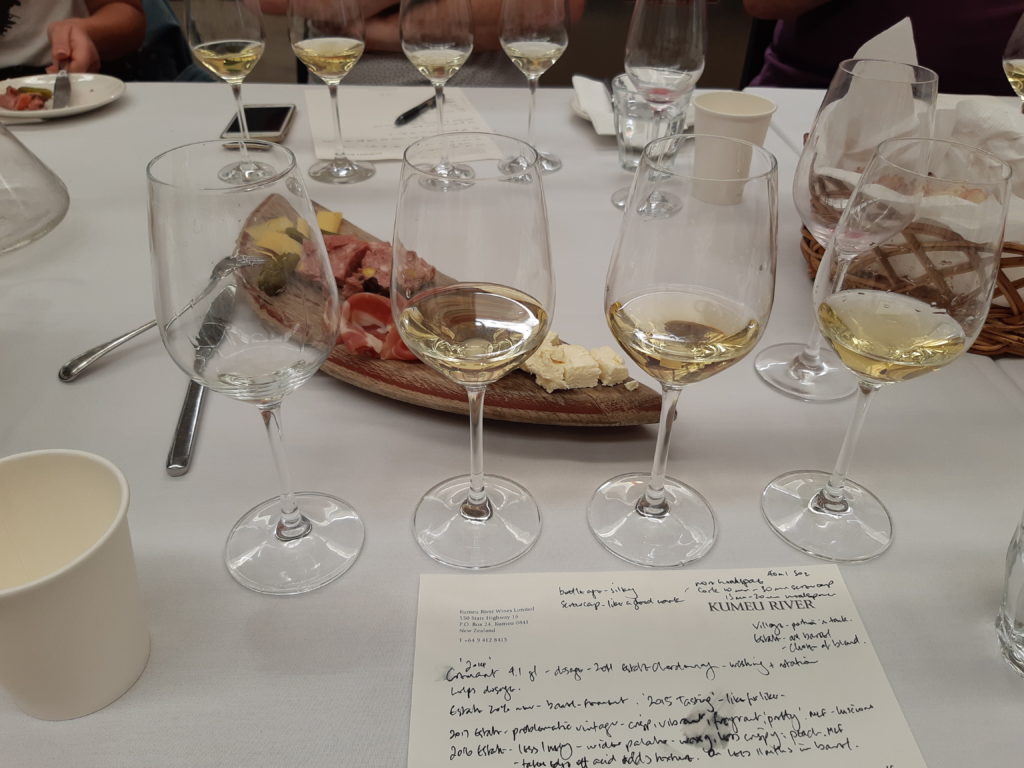
WF: Do you aim for a lot texture in your wine – is that important to you?
MB: Texture is very important. One of the great things about the variety of chardonnay is that when it’s made well, you always get texture. A lot of that comes back to how we harvest it and how we process it. It’s all whole bunch-pressed; and that, to me, is the best way to get juice out of grapes – the way to get the right amount of tannins as well. Also, the wines build texture through bottle age – as you go through the tasting you’ll see that – a process we don’t completely understand yet.
Paul introduces the next flight and explains “we’ve always thought that the five to seven years of age is when the wines really start to change quality and structure in the bottle. The first two or three years, you do see changes, then slow down a bit and between five and seven they start to drink really, really well. With bottle age they become very lithe and very silky.”
“The Hunting Hill vineyard facing North-West but gets prevailing breezes from the west coast, and on a windy day you can stand up there and really smell the sea – it can be that much.. Year in, year out we get this very fragrant style of chardonnay; this fragrant lemon-lime blossom – its quite distinctive and we get it every year.”

I find the 2013 Hunting Hill Chardonnay a pretty wine that’s quite light on its feet for it’s high alcohol level. Some of the youthful austerity (from such a low yielding year) has mellowed but with mandarin and oatmeal in a still minerally core texture. There’s also a wet-stone salinity to the finish. The 2010 Hunting Hill Chardonnay is showing a beautiful golden colour in the glass from its slow aging curve in the bottle. Some of the steeliness is still there – it’s juicy and sleek; but now showing a gorgeously plush texture.
The Matés Vineyard Chardonnay always tends towards a sweeter fruit character, with the distinctive pear note showing well in the 2006 vintage. Densely concentrated with a creamy texture but vibrant and fresh – still lightly fruity with hints of peach and that sliced pear sliding away as the secondary notes of hay and mushroom sidle in. The 2008 Matés Vineyard Chardonnay came from a year with several days over 30 degrees, and the lusciously ripe fruit development is still showing. A gentle butterscotch note could come from the age, but around the table we talked of a hint of botrytis too. Still a hugely complex wine, thriving in it’s own unique opulence.

Michael concludes with some talk about tasting grapes in the vineyard. “All of a sudden you will taste that lemon character. And you think ‘a-ha’ and you can pick for the next week” and before we know it, we’re heading down into the cellar again (Paul took us down for sneak at the gorgeous subterranean world of barrels down there earlier) but with glasses firmly in hand this time. A couple of minutes later, the winemaker of my favourite wine is filling my glass with the 2019 chardonnays from the barrel. It’s a surreal moment. Just pinch me. I can report that they are all tasting magnificent – clear a space in your cellars. In particular the Rays Road wine is looking superb.
Back to the tasting room, and we are allowed back to the Pinot Noirs – the Hunting Hill Pinot Noir 2018 is a gorgeous wine. A juicy acidity with a generous palate of ripe cherry and spiced plums heading to refined concentrated depths. They definitely do take this wine seriously, and it will be a great pairing of this noble grape when the Rays Road Pinot Noir starts to hit it’s straps as well.
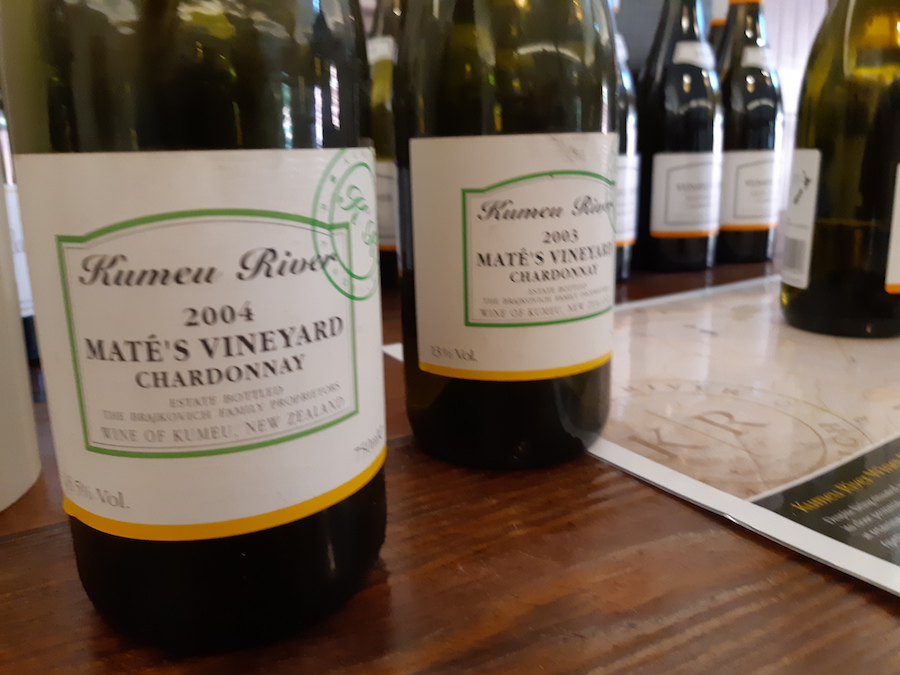
But. Unexpected, another bottle of Chardonnay appears. I can drink Chardonnay all night, so this is a treat. However, to then see it’s a 2003 Matés Vineyard!? Just smile and wave. I do a lot of tourism work and we talk about manaakitanga as a special kiwi sense of hospitality. The Brajkovich family carry this inherently and the welcome and warmth that exudes from this place is something special. Not to be glib, but you can taste it in the wines.
The careful custodianship of these vineyards and the complete attention to excellence that is ingrained in this very ‘family’ business has not unsurprisingly been recently recognized with an award of the Sir George Fistonich Medal at last month’s NZ International Wine Show.
The wine was angelic. That it was then followed by the opening of a 2004 Matés Vineyard, begins to not be such a surprise any more! I’m actually laughing now, as speaking becomes irrelevant – tricky. I’ll just put up the photos; and end with the word that probably sums this evening up. Remarkable.

